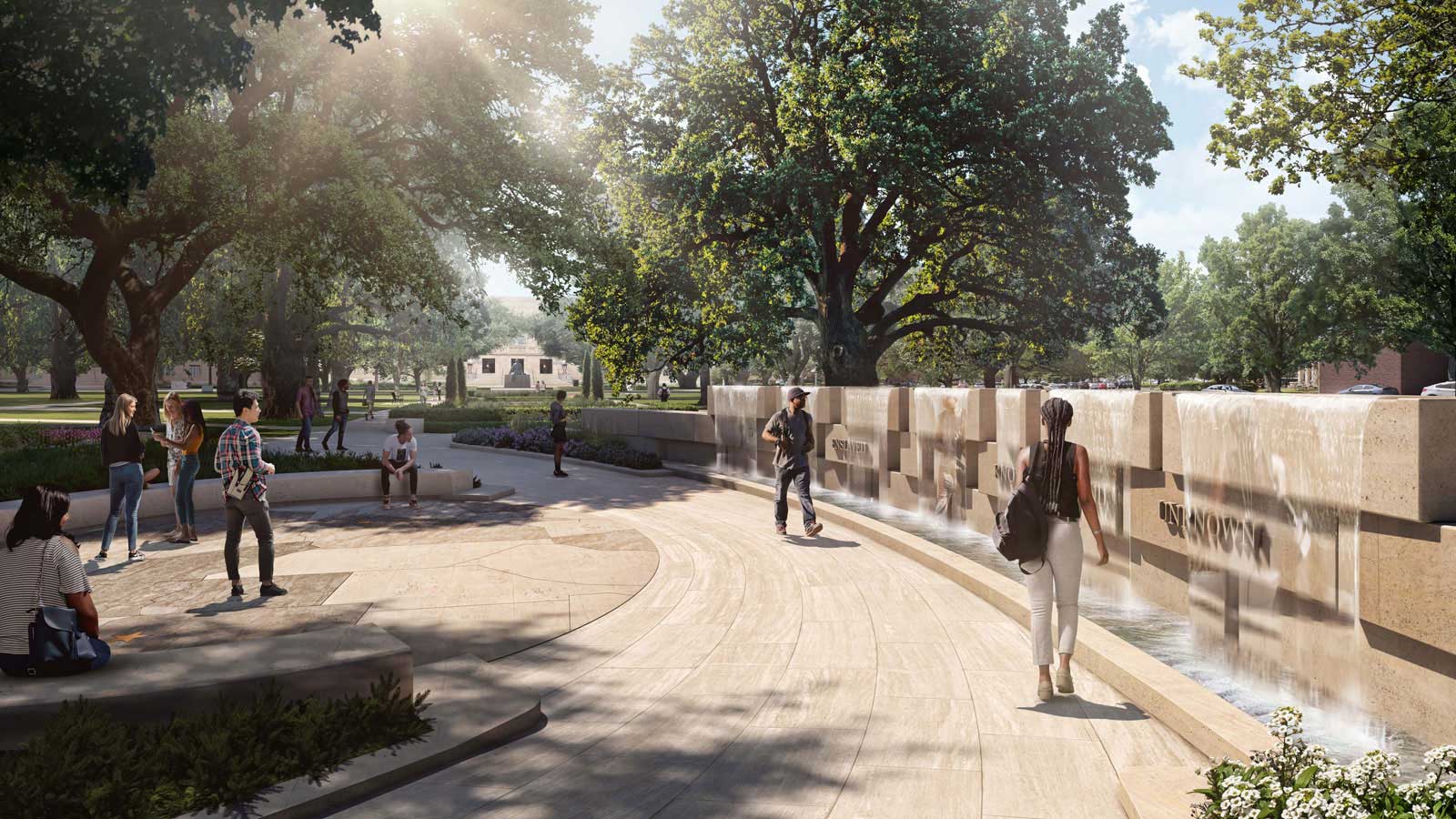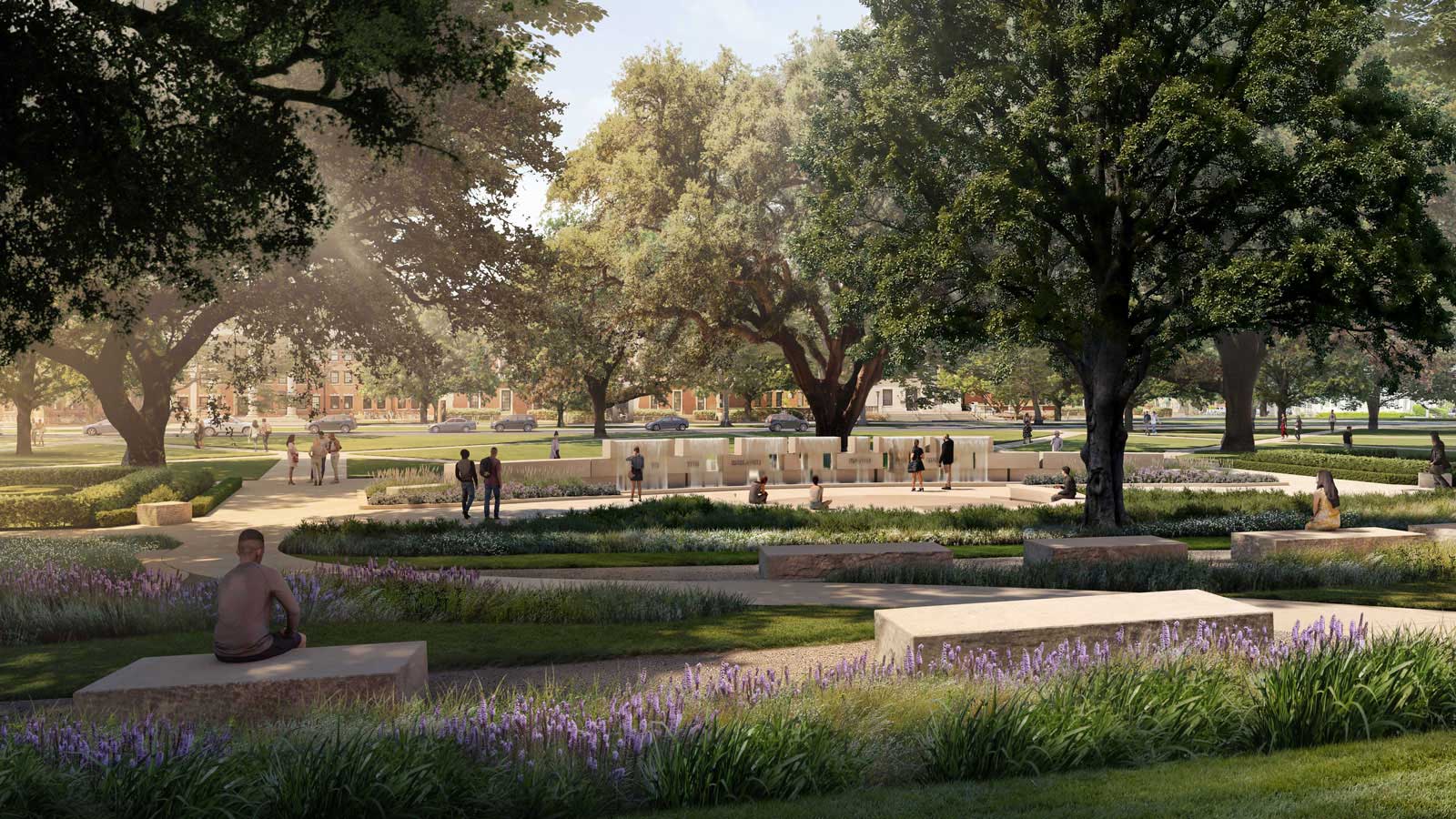Telling a Fuller Story
This spring, Baylor released the first detailed renderings of an addition to Founders Mall called the “Memorial to Enslaved Persons.” A report by Baylor’s Commission on Historic Campus Representations recommended the new memorial as an opportunity to honor the enslaved persons “who were instrumental in constructing the original campus where Baylor University began its journey” and whose identities remain unknown.
Partnering with renowned architectural firm Sasaki, University leadership is developing plans for the Memorial.
The Memorial will be constructed of limestone, inspired by the material abundantly used on the original Baylor campus in Independence, Texas (which was likely built at least in part by enslaved people). The plans reveal three distinct but connected parts to guide the Baylor Family in learning, understanding and reflecting on the University’s history.
The Memorial’s outer ring will be formed with stacked stones leaving intentional voids between — representing both the unknown enslaved and gaps in Baylor’s history — and will include a cascading water feature.
The smaller, inner ring of the Memorial will feature a ground-level map of East Central Texas, including Washington and McLennan counties — home to Independence and Waco, respectively. The shaded areas on the map will depict the enslaved population density, circa 1860.
The amphitheater-style Resonance Garden between Draper Hall and the Memorial will allow students and other visitors to reflect on the information presented in other areas of the Memorial through engravings and QR codes.
This addition to Baylor’s campus is the result of ongoing efforts by the University to examine its past with an eye toward flourishing in its Christian mission.
“We believe that by forthrightly and fully addressing Baylor’s history,” President Linda A. Livingstone, Ph.D., said, “our continued journey of redemption and reconciliation will lead to a season of renewal and new beginnings on our campus as we take measures to address all historical aspects of the Baylor story and celebrate the value of all members of the Baylor Family in fulfillment of our Christian mission and in keeping with our Christian witness.”
In June 2020, the Baylor University Board of Regents announced its unanimous approval of the “Resolution on Racial Healing and Justice,” acknowledging Baylor’s historical connections to slavery and the Confederacy and establishing the Commission on Historic Campus Representations.
The Commission, made up of individuals from Baylor’s student body, faculty, staff, alumni and regents, undertook the task of examining Baylor’s markers of historical representations across campus. The Commission submitted a report offering guidance on how to tell a more complete story of the individuals instrumental to Baylor’s establishment.
“Our goal at the outset of this process was not to erase Baylor’s history, but rather to tell the University’s complete story by taking an additive approach as we shine light on the past,” explains Board Chair Mark Rountree, B.B.A. ’86, M.T.A. ’87. “Some of the facts uncovered about the University’s history have indeed been painful, but it is important that we move forward together as the Baylor Family through an intentional process of reckoning, repentance, reconciliation and redemption.”

